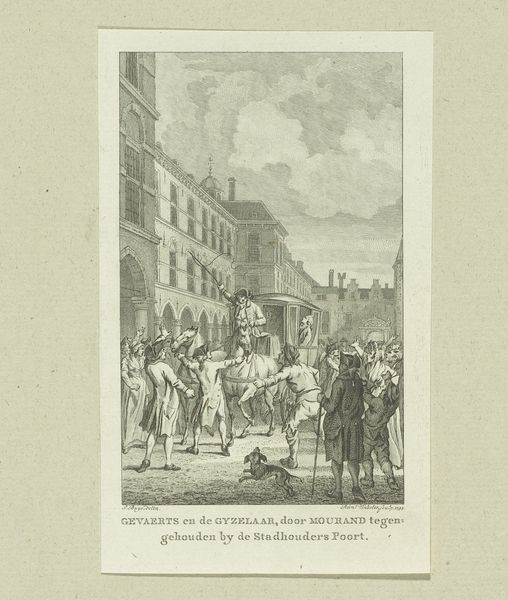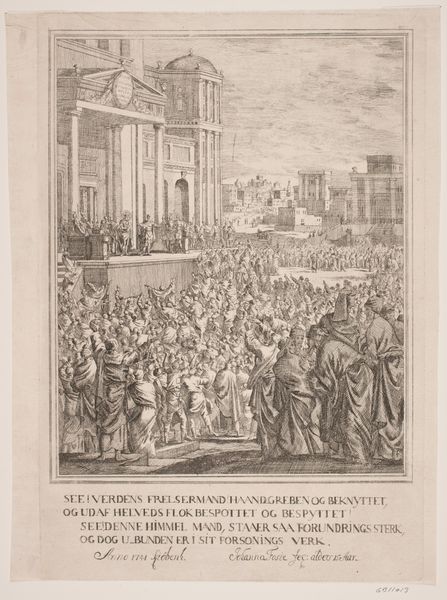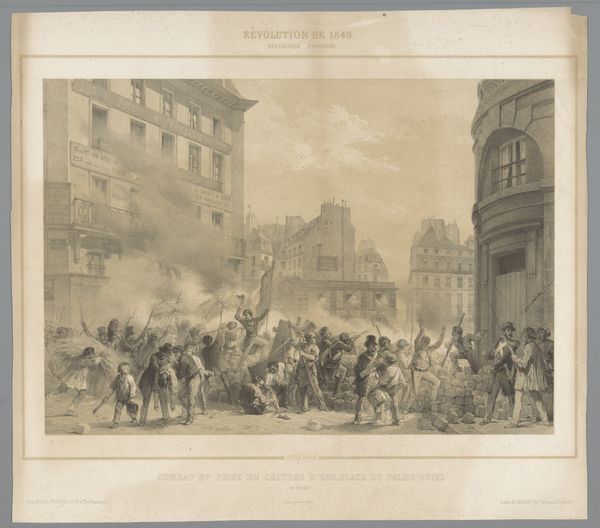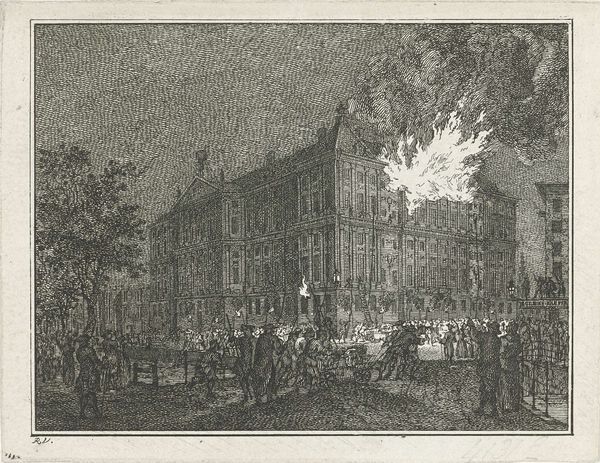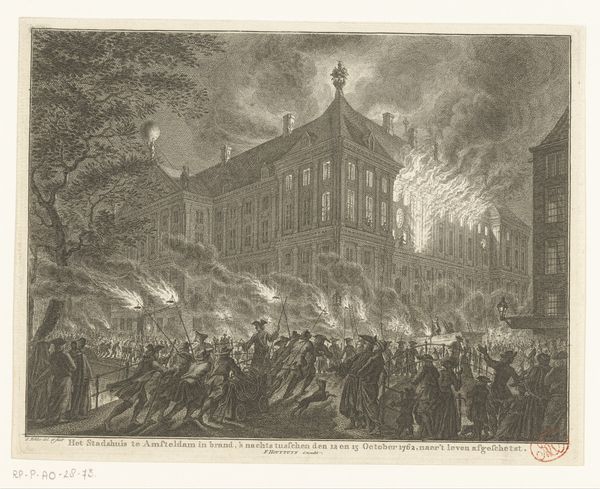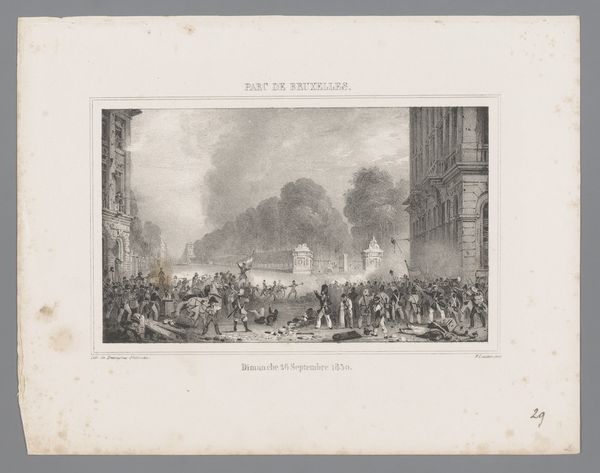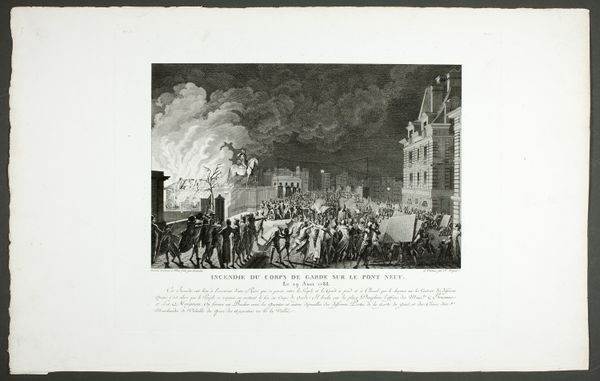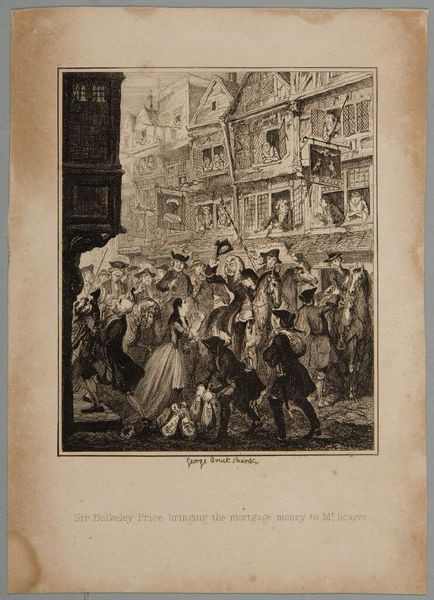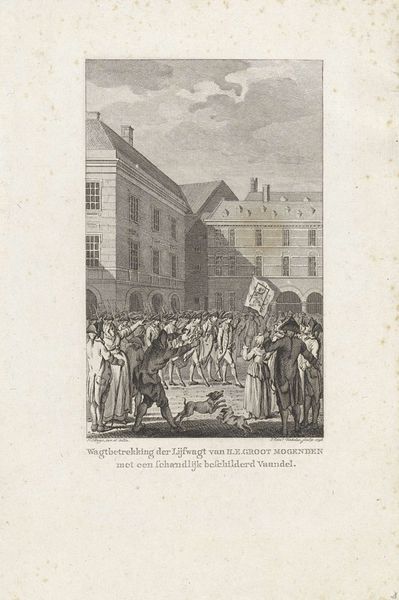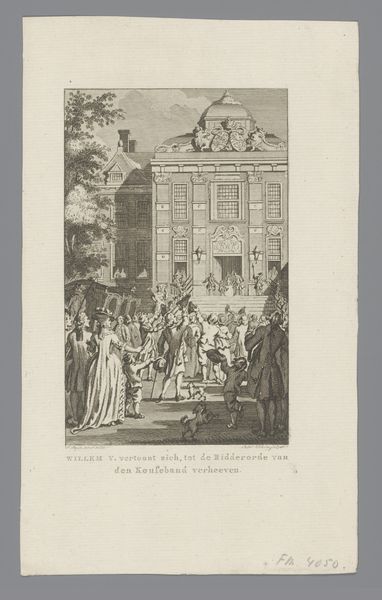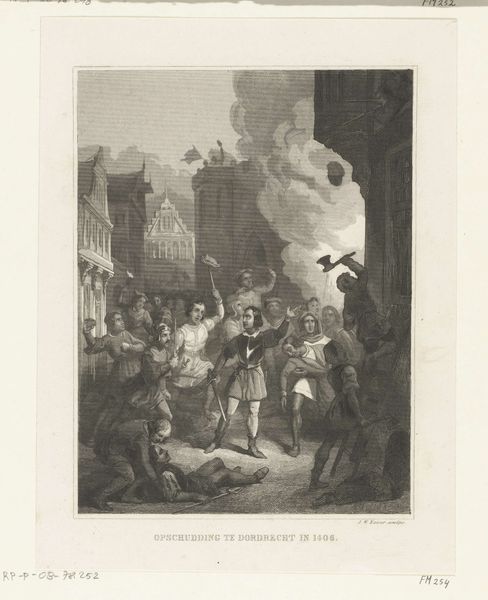
print, etching, engraving
#
narrative-art
# print
#
etching
#
old engraving style
#
archive photography
#
romanticism
#
cityscape
#
history-painting
#
engraving
Dimensions: height 304 mm, width 233 mm
Copyright: Rijks Museum: Open Domain
Editor: This engraving by Théodore Fourmois, titled "Plundering van het huis van Libry-Bagnano, 1830," captures a chaotic scene. It's hard to miss the feeling of unrest and almost frenzied activity in the etching. I'm wondering, what social narrative do you think Fourmois is trying to express in this historical context? Curator: The work's socio-political undertones are quite palpable. It illustrates the plundering of Libry-Bagnano's house during the 1830 revolution, which resulted in the separation of the Southern Netherlands from the Northern Netherlands. Its original context as a print also informs how we perceive the event: was it made to criticize or glorify these events? Editor: That's a key point I hadn't considered. How might the medium of print, specifically etching, affect the artwork's message and public perception? Curator: As an easily reproduced image, the print would have been instrumental in disseminating a particular interpretation of these events, whether as propaganda, historical record, or social critique. Notice the artist's emphasis on the mob, suggesting a particular sympathy, and perhaps aligning the artist with their actions and motives. How do you feel it affects your interpretation knowing that this piece now hangs in the Rijksmuseum? Editor: Knowing that it resides in the Rijksmuseum gives it an elevated historical importance, and places the depicted unrest safely in the past. I almost wish it still carried a bit of its original "agitprop" feeling, removed from its initial context! Curator: Yes, it’s interesting to consider how institutional display changes the meaning and potency of a work originally conceived in a moment of revolution. Something meant to agitate can become a memento in a public collection, viewed and studied from different perspectives.
Comments
No comments
Be the first to comment and join the conversation on the ultimate creative platform.
